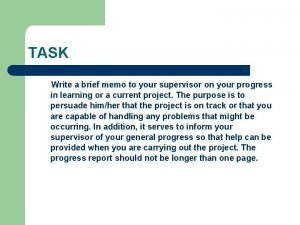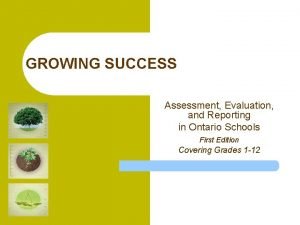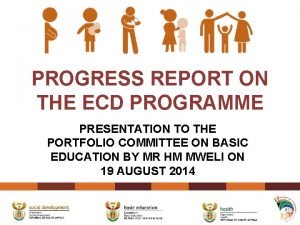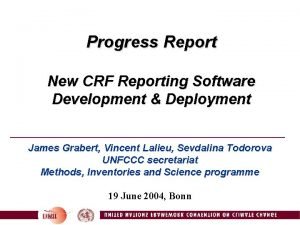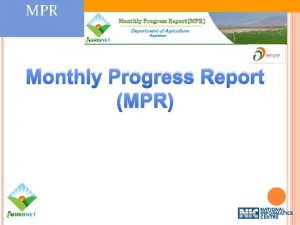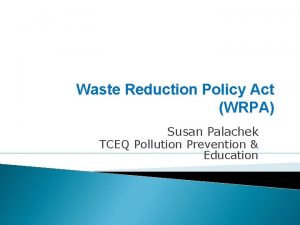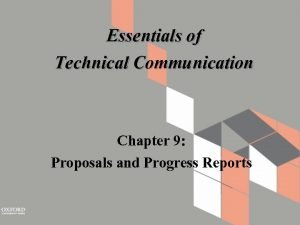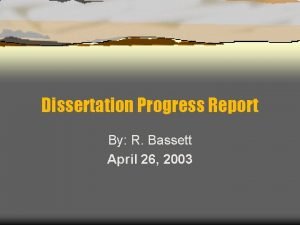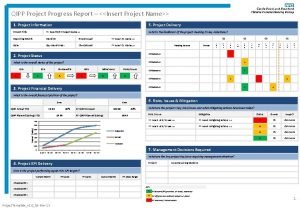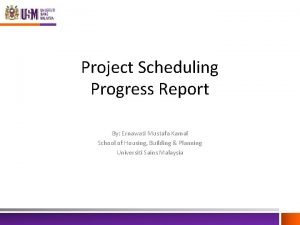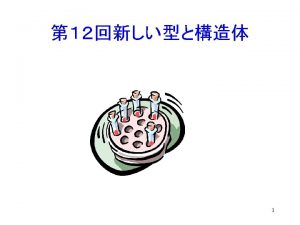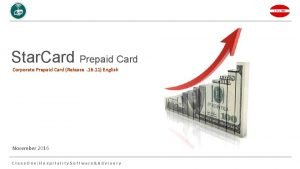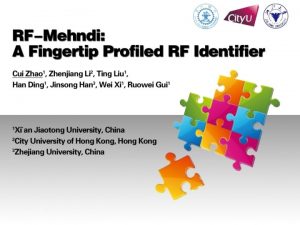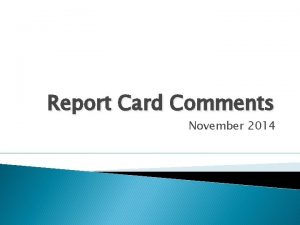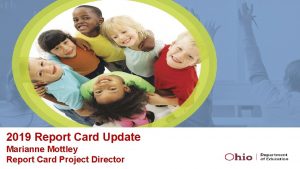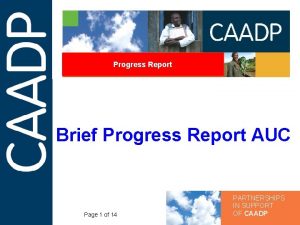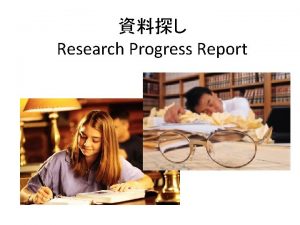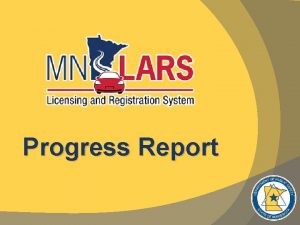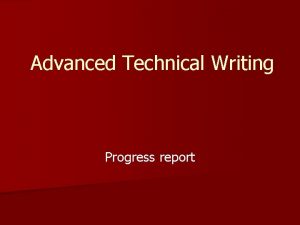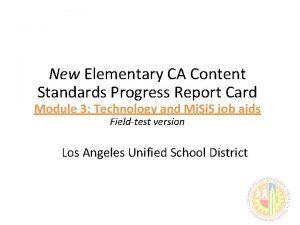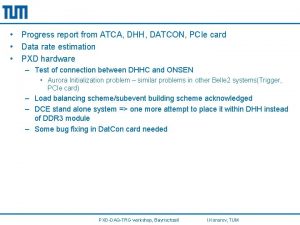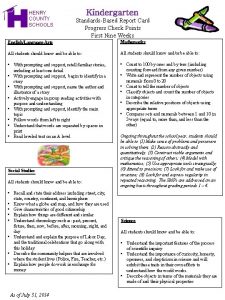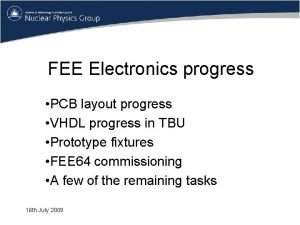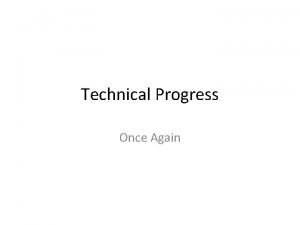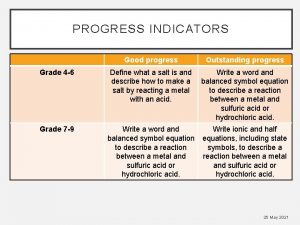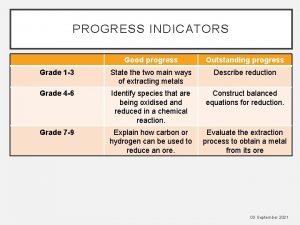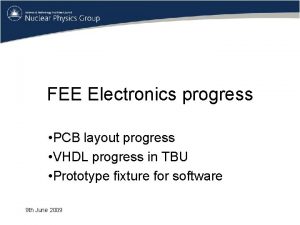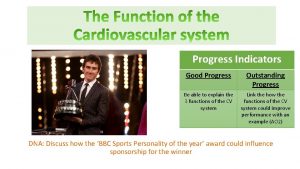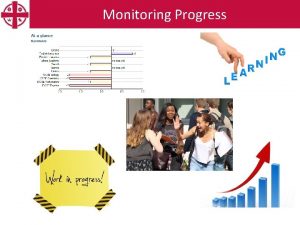Progress Report Card 1 The Progress Report Card














































- Slides: 46

Progress Report Card 1 The Progress Report Card September, 2011

Progress Report Card 2 Agenda • • • Introduction and Overview -15 minutes Activities 1 and 2 - 45 minutes Activity 3 (with break) – 60 minutes Assessment For/As/Of Learning Definitions - 15 minutes Activity 4 - 60 minutes LUNCH Summarizing AM and Connecting With PM- Progressing Well, Progressing Very Well, Progressing With Difficulty- 30 minutes Activity 5 - 60 minutes Debriefing Activity - 15 -20 minutes Team Time - 30 minutes Last Words/Parking Lot/AER Gains Site - 15 minutes

Progress Report Card 3 Purpose of Session • To clarify policy • To assist in the process of completing the Progress Report Card • To confirm what’s going well “The Progress Report Card gave me the freedom to teach” (Ontario teacher)

Progress Report Card 4 Session Learning Goals We are learning: • To align effective practices in assessment for/as learning with the Elementary Progress Report Card • To develop and use common language regarding the Elementary Progress Report Card • To develop criteria for writing effective comments • To develop a process for writing personalized, clear, precise and meaningful comments

Progress Report Card 5 Elementary Progress Report Card-1 • Based on two years of provincial consultations with teachers, parents, principals, and students • Facilitates better communication among parents, teachers, and students

Progress Report Card 6 Elementary Progress Report Card 2 Provides an opportunity to: • Conduct and provide feedback related to assessment for learning and assessment as learning; • Establish a positive relationship between teachers, parents, and students; • Involve parents as partners in a conversation about learning and assessment, and what they can do to support their child’s learning.

Progress Report Card 7 Elementary Progress Report Card-3 Provides an opportunity to: • Identify strengths and areas for improvement in student progress early in the school year • Develop strategies to – improve student learning; – involve students in the improvement of their own learning (e. g. , through self-assessment and goal setting).

Progress Report Card 8 Differences Between the Progress Report Card and the Provincial Report Card-1 Elementary Progress Report Card Elementary Provincial Report Card Reporting Period: September to October/November Reporting Periods: October/November to January/February; January/February to June Shows a student’s general progress in working towards the achievement of the curriculum expectation in all subjects Shows a student’s achievement at two points in a school year (First provincial report card reflects achievement from September to January/February)

Progress Report Card 9 Differences Between the Progress Report Card and the Provincial Report Card-2 Elementary Progress Report Card Elementary Provincial Report Card When appropriate, teachers are encouraged to collaborate in generating comments to provide a holistic profile of the student. Teachers are not required to comment on all subjects Each subject area has a comment box. Teachers may individually provide comments for every subject/strand taught Emphasis on assessment for/as learning and a focus on learning skills and work habits Emphasis on assessment of learning (evaluation) with a continued emphasis on learning skills and work habits

Progress Report Card 10 Differences Between the Progress Report Card and the Provincial Report Card-3 Elementary Progress Report Card Elementary Provincial Report Card Report cards indicate whether students are progressing with difficulty, progressing well, or progressing very well Report cards have charts showing alignment of levels of achievement with letter grades and percentage grades

Progress Report Card 11 Similarities-1 • Provides descriptive feedback on development related to the six learning skills and work habits and achievement towards/of the curriculum expectations. Feedback is descriptive and evidence-based. • Comments focus on strengths and next steps for improvement. • Comments identify specific strategies and /or interventions required as next steps.

Progress Report Card 12 Similarities-2 • Provides opportunities for communication with parents and students and builds a partnership with home and school. • Comments are personalized, precise , and written in parent-friendly language. • Reports are based on criterion-referenced evidence from the provincial curriculum

Progress Report Card 13 Assessment For/As Learning Practices Success Criteria Descriptive Feedback Peer- and Self-Assessment Individual Goal Setting Gathering Information Engineering effective questions, conversations and learning tasks Learning Goals

Progress Report Card 14 Assessment for/as Learning After watching this video, discuss with your elbow partner what report card comments you would write based on the interactions of students and teachers in the classroom. Segment 1 – The Foundation of Assessment for Learning

Placemat Activity 1 Progress Report Card 15 Minds On “Studies show that students perform better in school if their parents or guardians are involved in their education. This is the basis for the principle that students and parents should be kept fully informed about the student’s progress. ” (Growing Success: Assessment, Evaluation, And Reporting In Ontario Schools, p. 8)

Placemat Activity 216 Progress Report Card Ongoing communication-1 Beginning of Reporting Period End of Reporting Period Ongoing Communicatio n with students and parents During Reporting Period

Progress Report Card 17 Ongoing communication-2 Beginning of Reporting Period Communication may include: · providing an overview of expected learning Beginning of Reporting · conducting and communicating the Period results of diagnostic assessment · making phone calls or sending letters of welcome to parents · meeting with students to discuss goal setting and success criteria, and communicating these to parents, as appropriate ·conferencing with students and, where appropriate, with parents End of Reporting Period Ongoing Communicatio n with students and parents During Reporting Period

Progress Report Card 18 Ongoing communication-3 Beginning of Reporting Period End of Reporting Period During Reporting Period Ongoing Communication may include: n with • conferencing with students and, students where appropriate, with parents · monitoring student progress using tracking sheets, exit tickets, or and(e. g. , parents passes) and involving parents when appropriate · providing descriptive feedback to students on a regular basis in the classroom and to parents through phone calls or notes sent home · maintaining communication through student agendas, which may be sent home to parents · creating newsletters about learning goals and success criteria · sending home completed During assignments Reportingshowing Periodteacher feedback for parental review and signature · maintaining a website outlining learning goals, success criteria, and assignments (Note: Teachers need to be cautious about relying solely on electronic feedback, as not all parents may be able to access electronic communications)

Progress Report Card 19 Ongoing communication-4 End of Reporting Period Beginning of Reporting Period End of Reporting Period Communication may include: Ongoing Communicatio n with students and parents During Reporting Period · having conversations with parents and students about information on report cards · scheduling student-led conferences · clarifying goals for learning and goals for further instruction through teacher-parent conferences, phone calls, meetings, or notes

Progress Report Card Placemat Activity 320 Tapping into Collective Wisdom Discuss effective practices from the identified area at your table. Record your responses on the chart paper.

Progress Report Card 21 Carousel Move to the next table. Read the chart from that table, discuss as a group, and add new practices to the chart paper. When you return to your original table, discuss the additions to your chart, and then post on the wall.

Progress Report Card 22 Gallery Walk Have one person in your group stay at your chart to explain it to other people and to identify the three most effective practices. The other members of the group take a few minutes to walk around the room and read the posted charts. Use your placemat to record information.

Progress Report Card 23 Assessment for learning “Assessment for learning is the process of seeking and interpreting evidence for use by learners and their teachers to decide where the learners are in their learning, where they need to go, and how best to get there. ” (Growing Success: Assessment, Evaluation, And Reporting In Ontario Schools, p. 31)

Progress Report Card 24 Assessment as learning “Assessment as learning focuses on the explicit fostering of students’ capacity over time to be their own best assessors, but teachers need to start by presenting and modelling external, structured opportunities for students to assess themselves. ” (Growing Success: Assessment, Evaluation, And Reporting In Ontario Schools, p. 31)

Progress Report Card 25 Assessment of learning “Assessment of learning is the assessment that becomes public and results in statements or symbols about how well students are learning. It often contributes to pivotal decisions that will affect students’ futures. ” (Growing Success: Assessment, Evaluation, And Reporting In Ontario Schools, p. 31)

Progress Report Card 26 Sources of evidence to assess student learning Conversations Observations Products

Placemat Activity 4 Progress Report Card Question How do you know your students are learning? List all the ways you know your students are learning. Write them on your placemat. 27

Progress Report Card 28 Directions: Activity 4 Use the post-its notes at your table to re-classify the list that you created. Use blue post-its to indicate items that represent Assessment Of Learning and use yellow post-its to indicate items that represent Assessment For/ As Learning. WRITE ONE ITEM PER POST-IT

Progress Report Card 29 Activity 4 (continued) Place each of your post-it notes on the triangle at your table as an example of observations, conversations and products.

Progress Report Card 30 Conferences Conversations Notes Journal Blogs Moderated Online forums Teacher/Student feedback Focused conversations Portfolio Conferencing Running Record List of Books Read Vocabulary Checklists Observation Checklist Anecdotal observation Questioning Presentations Listening Speaking Problem Solving Group Skills Observations Balanced Assessment Performance Tasks Assignments Test Scores Reader Responses Tests Portfolios Checklists Videos Journals Projects Graphs Products

Progress Report Card Common Understanding “The purpose of assessment is not to rate, rank, and sort students, but to provide meaningful feedback that leads to high performance for all students. ” (Marzano and Heflebower) 31

Progress Report Card Placemat Activity 5 What does Progressing…. . • Well • Very Well • And With Difficulty… Based on assessments for, as, and of learning to date MEAN? 32

Progress Report Card 33 Progressing Well Sample Descriptors • Demonstrates ongoing, consistent improvement towards meeting the provincial standard by the end of the term/year • Evidence that student is meeting or will meet the provincial standard • Other sample descriptors… Includes specific next steps

Progress Report Card Progressing With Difficulty-1 Sample Descriptors • Demonstrates that the student will require improvement and/or assistance to meet the provincial standard at the end of the term/year • Evidence that student is not meeting or will not meet the provincial standard • Other sample descriptors… Includes specific next steps 34

Progress Report Card Progressing With Difficulty-2 Ongoing communication with parents is key if a student receives progressing with difficulty. Parents should be informed about progressing with difficulty prior to receiving the Progress Report Card. 35

Progress Report Card 36 Progressing Very Well Sample Descriptors • Demonstrates ongoing, consistent improvement towards meeting or exceeding the provincial standard by the end of the term/year • Very consistent evidence that student is meeting or will meet, or is exceeding or will exceed, the provincial standard • Other sample descriptors… Includes specific next steps

Progress Report Card Creating the Criteria for Effective Comments Think-Pair-Share Think… • Read the sample comments. • Co-create criteria for effective comments. 37

Progress Report Card 38 Co-creation of Criteria for Effective Comments

Progress Report Card 39 Criteria for Effective Comments-1 • Comments that are personalized, clear, precise and meaningful • Refer to specific evidence of learning gathered from conversations, observations and/or products • Reflect the interests, learning preferences and readiness of the student • Use a positive tone and student-friendly vocabulary that has been shared with parents. • Identify gaps in learning

Progress Report Card 40 Criteria for Effective Comments-2 • Focus on knowledge, skills and criteria identified in curriculum • Describe significant strengths that students need to continue to demonstrate • Identify next steps for improvement that: – Provide concrete next steps for student, and – Provide specific suggestions for how parents can support student learning

Progress Report Card Criteria for Effective Comments-3 • Use language that parents understand • Make references to particular strands, when appropriate • Provide parents with personalized, clear, precise, and meaningful feedback • Help parents understand how they can support their children at home • Avoid repeating curriculum expectations or achievement chart 41

Progress Report Card 42 Applying the Criteria Focusing on • Strengths • What is the learning (knowledge and skills) • Next steps for improvement

Progress Report Card Revising Progress Report Card Comments • Based on the criteria that we have co-created, revise each of the Progress Report Card comments • Share your revised comments with an elbow partner and peer assess 43

Progress Report Card 44 Comments Focusing on Strengths • Do the comments focus on specific aspects of knowledge, skills, and other criteria or elements identified in the curriculum (i. e. , overall expectations, criteria/categories in the achievement chart, strands, fundamental concepts, subject-specific processes)? • Do the comments describe significant strengths that the student has demonstrated and needs to continue to demonstrate?

Progress Report Card 45 Team Time Next Steps What speaks to us?

Progress Report Card 46 Wrap Up Discussion
 Project progress status
Project progress status Physical progress and financial progress
Physical progress and financial progress Supervisor
Supervisor Growing success percentages
Growing success percentages Ecd progress report
Ecd progress report Crf reporter
Crf reporter Mpr monthly progress report format
Mpr monthly progress report format Tceq p2 annual progress report
Tceq p2 annual progress report How to make final year project presentation
How to make final year project presentation Essentials of technical communication
Essentials of technical communication Seo progress report
Seo progress report Dissertation progress report yale
Dissertation progress report yale Progress report for internship
Progress report for internship How to report project progress
How to report project progress Progress report example
Progress report example Công thức tiính động năng
Công thức tiính động năng Tỉ lệ cơ thể trẻ em
Tỉ lệ cơ thể trẻ em Thế nào là mạng điện lắp đặt kiểu nổi
Thế nào là mạng điện lắp đặt kiểu nổi Lời thề hippocrates
Lời thề hippocrates Vẽ hình chiếu đứng bằng cạnh của vật thể
Vẽ hình chiếu đứng bằng cạnh của vật thể Quá trình desamine hóa có thể tạo ra
Quá trình desamine hóa có thể tạo ra độ dài liên kết
độ dài liên kết Các môn thể thao bắt đầu bằng tiếng chạy
Các môn thể thao bắt đầu bằng tiếng chạy Sự nuôi và dạy con của hươu
Sự nuôi và dạy con của hươu Hát kết hợp bộ gõ cơ thể
Hát kết hợp bộ gõ cơ thể Dạng đột biến một nhiễm là
Dạng đột biến một nhiễm là điện thế nghỉ
điện thế nghỉ Nguyên nhân của sự mỏi cơ sinh 8
Nguyên nhân của sự mỏi cơ sinh 8 Trời xanh đây là của chúng ta thể thơ
Trời xanh đây là của chúng ta thể thơ Voi kéo gỗ như thế nào
Voi kéo gỗ như thế nào Thiếu nhi thế giới liên hoan
Thiếu nhi thế giới liên hoan Phối cảnh
Phối cảnh Một số thể thơ truyền thống
Một số thể thơ truyền thống Thế nào là hệ số cao nhất
Thế nào là hệ số cao nhất Slidetodoc
Slidetodoc Sơ đồ cơ thể người
Sơ đồ cơ thể người Bảng số nguyên tố lớn hơn 1000
Bảng số nguyên tố lớn hơn 1000 Tư thế ngồi viết
Tư thế ngồi viết đặc điểm cơ thể của người tối cổ
đặc điểm cơ thể của người tối cổ Các châu lục và đại dương trên thế giới
Các châu lục và đại dương trên thế giới Cách giải mật thư tọa độ
Cách giải mật thư tọa độ Tư thế worm breton
Tư thế worm breton ưu thế lai là gì
ưu thế lai là gì Thẻ vin
Thẻ vin Cái miệng nó xinh thế
Cái miệng nó xinh thế Các châu lục và đại dương trên thế giới
Các châu lục và đại dương trên thế giới Bổ thể
Bổ thể


